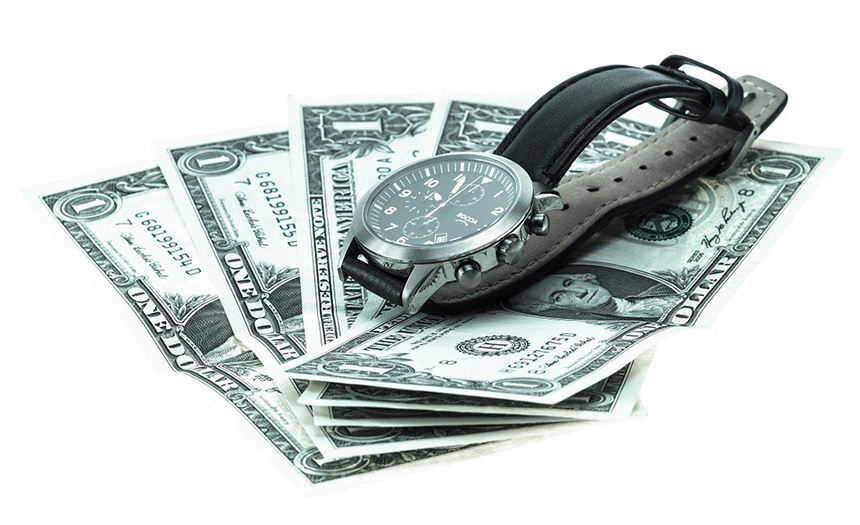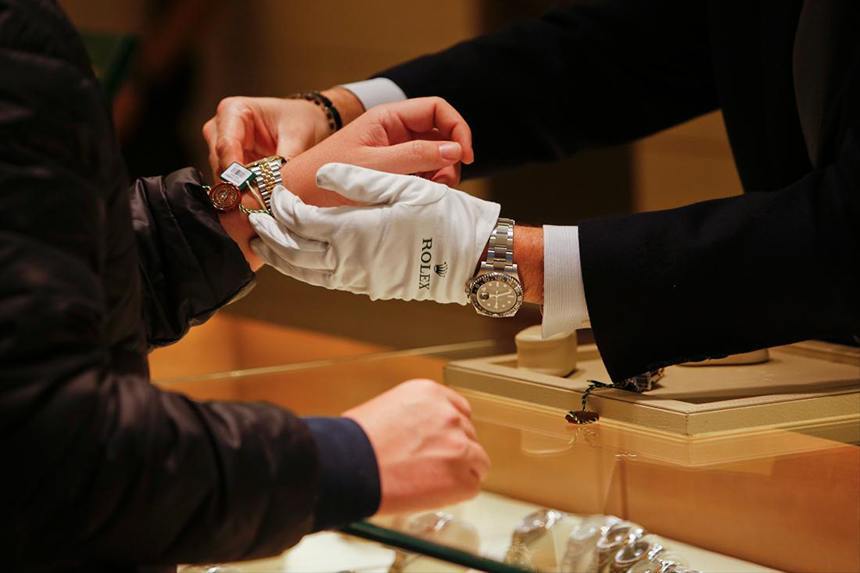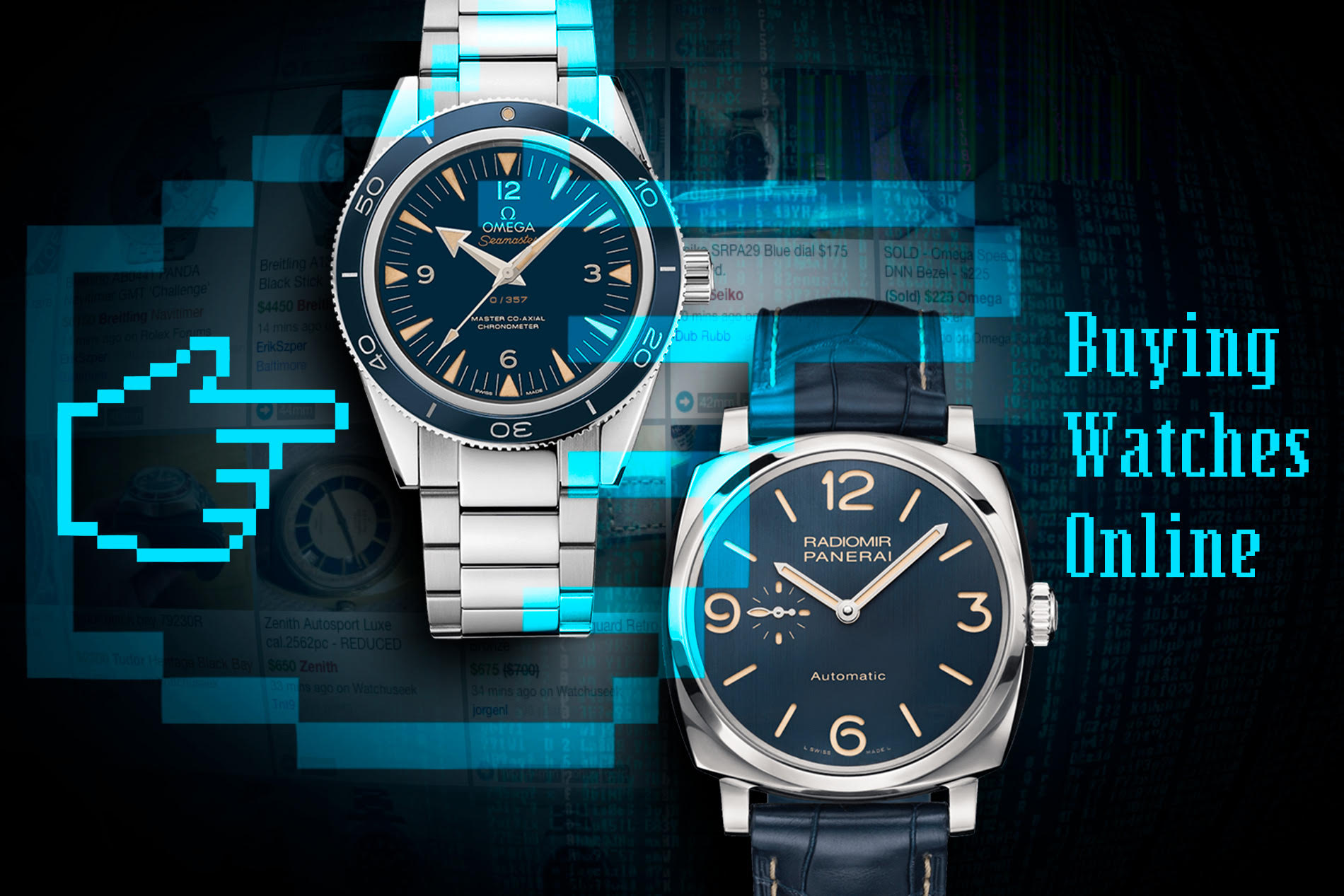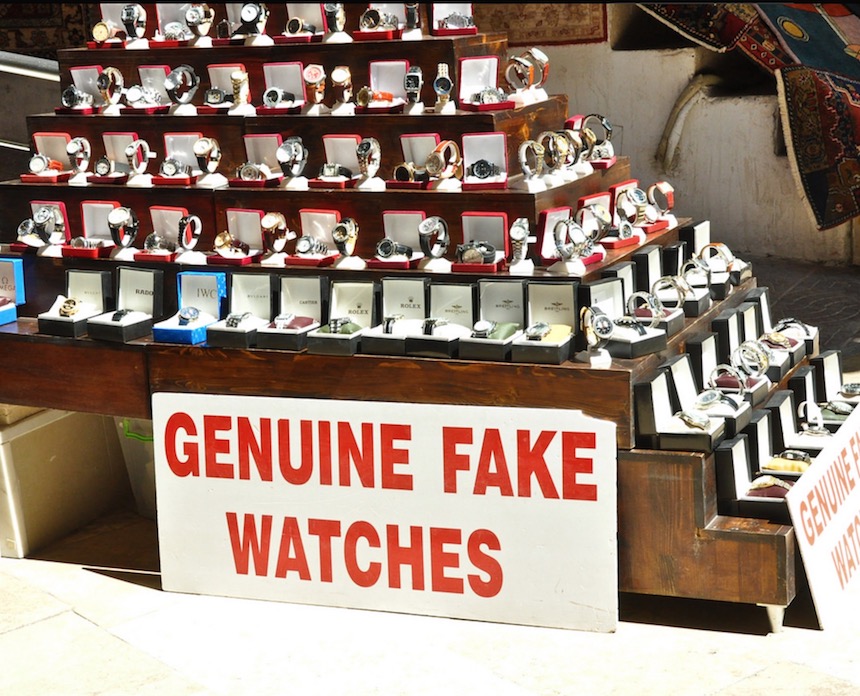
We would also suggest searching for local brick & mortar preowned and vintage watch stores that also have an online presence. It will require some research, but for example here in Los Angeles, there are places like Second Time Around and WannabuyaWatch where you can keep an eye on their inventory online and swing by the physical location if something grabs your interest.
Shipping, Taxes, & Duties When Buying Watches Online
The high price of fine watches means that considerations such as taxes and potential importing customs or duties are something to consider when shopping for watches outside of your immediate area. Compared to these potential cost shipping is often relatively inexpensive. Before we talk about some of the potential hidden costs of having a watch shipped to you, let’s discuss shipping options for a moment.
Most well-established watch retailers will recommend or automatically use safe shipping methods – and in many instances will pay for it as part of your purchase. Free shipping is common and should a welcome part of the transaction for many buyers. With that said, a lot of buyers should not gloss over shipping.
One consideration is whether a watch should be shipped with a signature required by the receiver. This is highly recommended for most people because in many instances a delivery person will simply leave a box containing a valuable watch by door or gate.
Some shipping prices requested by sellers can be high – especially if international shipping is required. High prices for shipping can be justified, especially if the shipment includes insurance. Getting your watch shipment insured is an option but not required since it does add considerable cost to shipping.
The biggest issue people face with shipping can occur when watches travel across country lines. Ironically, in the United States (for now) sales tax will not apply if you are purchasing a watch (or good otherwise) from a different state. Shipping watches between countries can incur import duties which in some instances can be very high. All of this depends on where you are shipping to and your home’s particular tax and duty system. This can be further complicated by the decision to declare the full or partial value of a watch. aBlogtoWatch cannot give you specific advice on how to best weigh various shipping and importation options – but those people living in places with complex or expensive import duties should do sufficient research prior to purchasing a watch online from a different country.

How & Why A Watch’s Price Varies Depending On Country
We don’t quite have the space to go into all the mind-numbing economic details behind this phenomenon, but we sure can give you the basics that you need to know.
First, there is the matter of the money, as in the currency that the watches are traded for. This includes not only you buying the watch in any given currency but the currency in which the seller (retailer, distributor, etc.) is paying for their stock. If the seller’s currency was weaker than normal (normal being how they have calculated their costs in advance), they had to overpay for their stock. Most all sellers will take the blow here and not push every bit of currency hiccup directly and immediately onto the customer, but if currency exchange rates suffer for long enough, you can bet you, the customer, are going to feel it at some point.
Even these days what happens sometimes is that retailers simply cannot adjust to a major drop in an exchange rate and, should you be at the right place at the right time, you’ll end up paying a lot less for a watch at some travel destination than you would be at home in your home currency. In simple terms, this happens when your home currency is strong and the currency of the place you are visiting dips considerably. This has happened in the UK and Russia in recent years, where there were deals to be had at select places at select times.
Less obscure a reason is taxes and other local fees. Sales taxes and/or VAT and/or luxury item taxes work much the same way as do currency fluctuations: you’ll find that a mid-single-digit difference in VAT will often not result in a noticeable (or indeed any) price difference. A watch sold in Germany with 19% VAT or in Poland with 23% VAT can have the same retail price.
Layer too many taxes and duties and other fees along with undesirable currency exchange situations and you can certainly end up with noticeable differences in prices around the world or, at times, in relatively smaller locations as well.

Buying A Watch From Abroad
Well, pretty much everything we discuss in this article… To be more specific though, there are some basic and some not-so-basic considerations you should make before seriously considering a purchase from distant parts of the world.
You should, by all means, familiarize yourself with the latest customs and import fees relevant for the watch’s country of origin – as in where you are buying it from, not where it was made.
Then there are certain aspects to it that are transferable between certain countries but not all of them. These are more often than not obscure things that can nevertheless turn a dream purchase into a nightmare. Regulations can affect whether or not you can legally purchase a watch on certain leather straps, for example – and just because the watch can be shipped freely back and forth within the EU, that doesn’t mean that you can easily source the exact same watch on the exact same strap from Australia or Japan – or sell it to those places.
Shipping something out from a country is more often than not a whole lot easier than bringing something into a country. That said, if for whatever reason you’d have to return your purchase, even if it is to a reputable seller, you may face serious customs or other related issues if you tried to return the same watch to the country where it’s from. Just because they let go of it easily doesn’t mean you can return it with the same level of convenience.
There also are serious cultural differences that you should consider. In some countries, even the smallest hairline scratch is something that sellers, as well as buyers, deem to be a notable issue even on a watch that’s several years old. Other places will list a watch as “Very Good” and then when you receive it in “Well Used” condition, they’ll just say “well, in this part of the world it’s Very Good for a 10-year-old watch!” Such differences in the approach to important aspects of a watch, as well as to customer service are very important to be familiar with (before dropping serious money on the experience), regardless whether you are selling to, or purchasing from a distant part of the world.
Related to this are issues linked to safety. Some parts of the world will have a very low crime rate and in case you do get screwed on your purchase, you can count on the local police to actually make an effort at resolving the issue. Many other places, you will meet total and utter ignorance – too bad, that it is precisely these places of the world where criminals thrive on the lack of action by the constabulary.
All in all, our suggestion is that you do some research online if you are completely new to the purchase experience from any given distant part of the world and try and find others who might already have some experience that they could share regarding any part of the process – shipping, payments, regular issues and so on. If all else fails, try and take as many precautionary actions as possible – make secure payments, use an escrow service or a renowned online intermediary.
How to identify fraud, fakes, and funny business in general
There two main ways of doing this: vetting the seller and vetting the watch. Sometimes the former, other times the latter is easier to identify as funny business.
As for the watch: Google serial numbers as well as the images with which the watch was listed (right-click on the image and select “Search Google for Image”), just to see if a watch was reported as stolen in forums or elsewhere online. Some will pose with hands-on images taken from Instagram or watch sites to appear to be having the actual merchandise on hand when in fact they do not.
Make sure it is the right model for a given year, that its presentation (box and papers, if any) have matching serial numbers and/or are from the same period. To give you an example, Rolex has changed the hangtags that go with every new watch from dark red to green – you shouldn’t be offered a watch from, say, 2004, with a green hangtag, because that’s about a decade more recent than the watch itself. Try and learn as much as you can about the watch and the brand that you are about to purchase. Do a lot of research online and try and find and ask those who own a similar watch.
As for the seller: beyond checking their ratings as a seller, take a critical look at the imagery they provide and the way that they describe their merchandise. Assess the tone they use when they communicate with you. Highly reputable, established companies and websites pretty much always will have some sort of a social media account – check if the site you are purchasing from has any, or try and find the seller on Facebook and other places if he/she is an individual.
There are countless fraudulent sites these days, still ranking frighteningly high on Google – they’ll gladly take your money but they won’t send you anything at all. From Birkenstocks to luxury watches, it’s almost a given that you’ll come across such sites. So, if purchasing from an online company, check that they have some outlets on social media or other 3rd party sites – YouTube, Google Maps and so on – where people can leave reviews. These fake sites will never list a social media account – or if they do, it’ll be so small and new that it won’t carry any weight at all.
Always be extremely cautious and suspicious with those reference points you think are well-established – cagey businesses these days know how to thrive on the mistakes of a superficial researcher. Just to give you an example: moderately sized, albeit long-standing, well-reviewed accounts on major trading sites are often purchased by those with fraudulent intentions. They will purchase long-inactive accounts from their owners – sounds weird but it does happen – only to then commit fraud by posing as a reputable seller. So if the ratings are stellar, check them carefully: how recent they are and how diverse they are in their wording, items purchased, the location of the buyers, and so on. Click around for a few minutes and rest assured, if something’s fishy there, you will figure it out.

How to vet an online retailer
Well, a lot of what we just described under point 6. is a good start. To go a bit further than that, feel encouraged to ask about more details about the watch. Reputable sellers who want to make a deal and want to stay (and thrive) in the industry will go out of their way to respond to your questions and queries – so long as they are reasonable and indicate genuine buying interest. Reputable sellers know their customers too; do them and yourself a favor and don’t rob them of their time when you know you won’t want to buy something there.
A good seller will gladly provide new images at your request as well as further information on the piece. If it’s a company, try contacting them via phone and/or email and/or Skype and see if you can get through – you don’t want to start trying once you’ve made a purchase and need to reach out to them about something.
Google still remains your friend: do a search for the seller’s name – let that be their company name or even their username on eBay, Chrono24 or elsewhere. Also Google their phone number and email address, just to see what comes up – who knows what you’ll find.

Tips on how to get the best price and when you can negotiate
First things first, know the watch – inside out. Know all its strengths and weaknesses, so if some important strongpoint is missing, or a weakness is present, you can try and bump the price down a bit. Try and track for a few weeks the prices they are selling for and/or do some retrospective research – search For Sale or Trade forum posts that might have the prices still in there, look up eBay auctions and so on. Don’t confuse what prices watches are listed at and what prices they actually are selling for. Experienced sellers might list something at a relatively high price but they will also know where each piece in their inventory stands in the pricing realm of that particular model.
Try and make the sale easy for the seller. If you can offer local pick-up, can wire funds the directly or have something else to offer to make the whole process easy, he or she will be much more likely to trade a slightly reduced price for a harder sell with someone else. Don’t ask “what’s your bottom price?”, just make a reasonable, logical, respectable offer that you can pay the same day. A direct, reasonable offer and cash in the bank the same day might just come in at the right time for the seller – allowing you to land a good deal.


